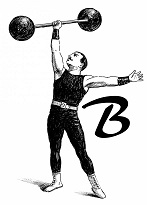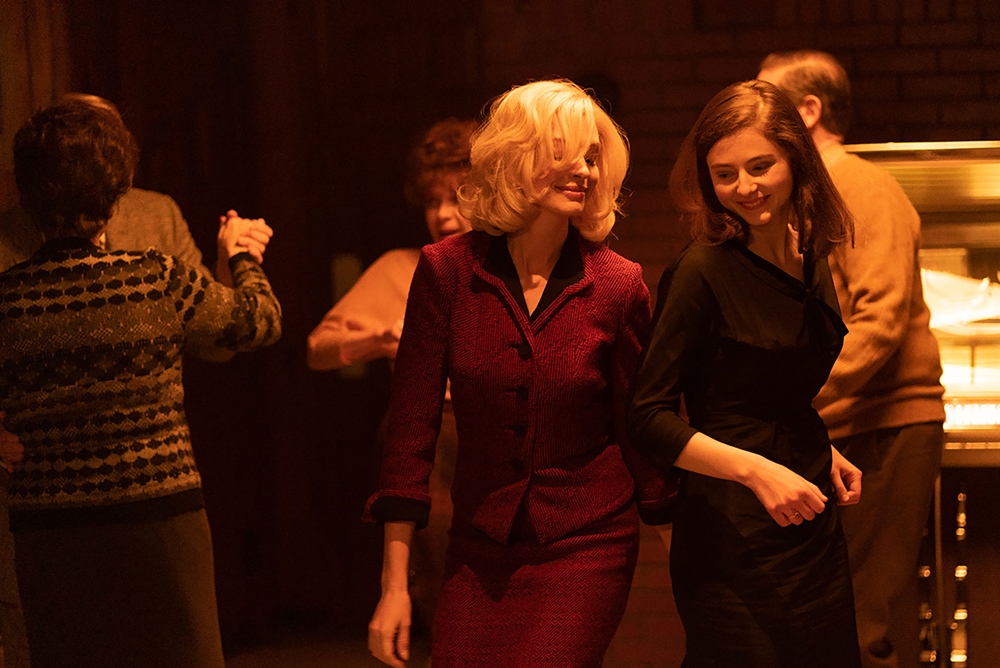William Oldroyd’s adaptation of Ottessa Moshfegh’s acclaimed novel, “Eileen,” is a class act in misdirection, for better or worse. The hazardous mixture of genres and plentiful surprises might leave many baffled due to the crux’s uncertainty. Still, those willing to embrace the chaotic nature of the Anne Hathaway and Thomasin McKenzie-led feature will end up with a lovely, thrilling, and, most importantly, entertaining ride. Its last act will definitely leave an impression, whether you like it or not — puzzled or delighted.
Is it fair to call American author and novelist Ottessa Moshfegh a genius? Her work is not only acclaimed by readers worldwide but also has a talent many others can’t impersonate. Mosfegh’s knack for writing intellectual comedy with dashes of perversity and a sense of dread is unique and awe-inspiring. She hasn’t ventured much into the cinematic medium, getting her first screenwriting credit in Lila Neugebauer’s directorial debut, the Jennifer Lawerence-led “Causeway.” However, her works are now getting adaptations from acclaimed directors. One of her most recognized books, “Eileen,” is getting a cinematic treatment by “Lady Macbeth” (which is a brilliant film, if you’d ask me) director William Oldroyd, who hasn’t made a film since then, back in 2016. Interestingly, his next project would be a cross-genre piece of work, where coming-of-age, thriller, romance, and comedy all gel to create a unique story.
A Strange-Yet-Effective Adaptation of Ottessa Moshfegh’s Novel
William Oldroyd’s rendition of “Eileen” is a strange film that plays like a “Carol”-like romance in its first half and a Hitchcock thriller in the other. And right in the center of it all, there’s a coming-of-age story about a severely fractured, nearly unfixable father-daughter relationship. Although this molotov cocktail of genres might lead you to think that it is aiming for a dumpster fire, it’s entirely the opposite. For better or worse, “Eileen” is a class act in misdirection, where a surprising quick switch is available in every corner of the narrative. Oldroyd’s latest will definitely leave an impression on you, whether you enjoyed the film and its unlimited surprises or were baffled at what was just shown.
I’m happy to say that I enjoyed the heck out of “Eileen,” even though I have a few reservations that keep it from becoming one of the best films at the festival. Smoke caused by an overheating car fills the screen as our protagonist, the titular Eileen (Thomasin McKenzie), heads to a local Boston, Massachusetts, makeout spot all alone. She’s watching the young couple in the car in front of her kissing. To quote Jessie Ware, things were getting hot and heavy. Eileen then opens the door, scoops up a handful of snow, and shoves it into her pants. This is one of the first instances where you don’t know what the film’s specific tone will be. You don’t know what’s lurking in the next hour-and-a-half, so buckle up. It is the 1960s, and Eileen works as a prison secretary.
‘Eileen’ is a Movie that is More than the Sum of Two Halves
She spends much of her time daydreaming about possible sexual encounters. For example, she imagines a prison guard pushing her up against a wall or masturbating when nobody’s looking. Things aren’t going as she planned in life, as her angry alcoholic father (Shea Whigham) occasionally berates her. As a result, she needs a distraction from her life at home. That diversion from her mundane life comes with the arrival of a new prison psychologist named Dr. Rebecca Saint John (Anne Hathaway). Eileen immediately is in a hypnotic trance by her presence. Her blonde hair swifts as she walks across the halls; Eileen has a newfound obsession with her. The two become close quickly, but something feels off about Ms. Saint John. What is she hiding? The latter half of “Eileen” tells us that. And it will blow your mind because it is absolutely spontaneous.
More so than a tale of two halves, Oldroyd’s movie is a crossover between genre upon genre. It emulates Hitchcock’s “bomb under the table” refrain with an endearing story about two lonesome ladies in a world that’s quickly changing. In terms of thematic resolution, “Eileen” leaves quite to be desired. The rushed pacing in its brief ninety-minute run-time leaves its ending feeling as if something was missing or left to be said. However, while its finale might leave a sour taste, Oldroyd pulls tricks up his sleeve throughout the movie. There is an intentional level of darkly-comedic campiness (sometimes even deadpan) in between the thriller and romance genre switcheroos, heightened by the performances of its leading duo of Thomasin McKenzie and Anne Hathaway, who are indeed an excellent yet indescribable pairing. Sexual tension and psychological manipulation are set across “Eileen’s” chessboard.
‘Eileen’s Change in Tones Oddly Work
Though, at the same time, there’s a distance between the titular character and Rebecca for the majority of the film. Moshfegh’s literature is hard to draw into the cinematic tenure, and Oldroyd treats it with care and pulls all of its twists with sheer confidence. That’s the main reason it works for the most part. It isn’t what people want it to be. And you know what, that’s okay. “Eileen” demands your attention and forces the audience to stay put and enjoy the ride. Self-awareness drives it home, and the ending makes it stick, which has a spectacular monologue from Marin Ireland. As a fun fact, this is her second film at this year’s Sundance Film Festival. And she steals the show in both of them.
It’s a bit ridiculous in how quickly it changes tones, sure. However, the misdirection from start to finish kept surprising me more and more until I accepted its true nature. Deceiving the audience repetitively isn’t a good thing to do. Yet, “Eileen” gets away with it. It makes me hopeful that one day, someone (hopefully Yorgos Lanthimos) will adapt Ottessa Moshfegh’s brilliant 2018 book “My Year of Rest and Relaxation.”

“Eileen” is currently playing at the Sundance Film Festival. The festival goes from January 19 – January 29. Join us for continual coverage.


